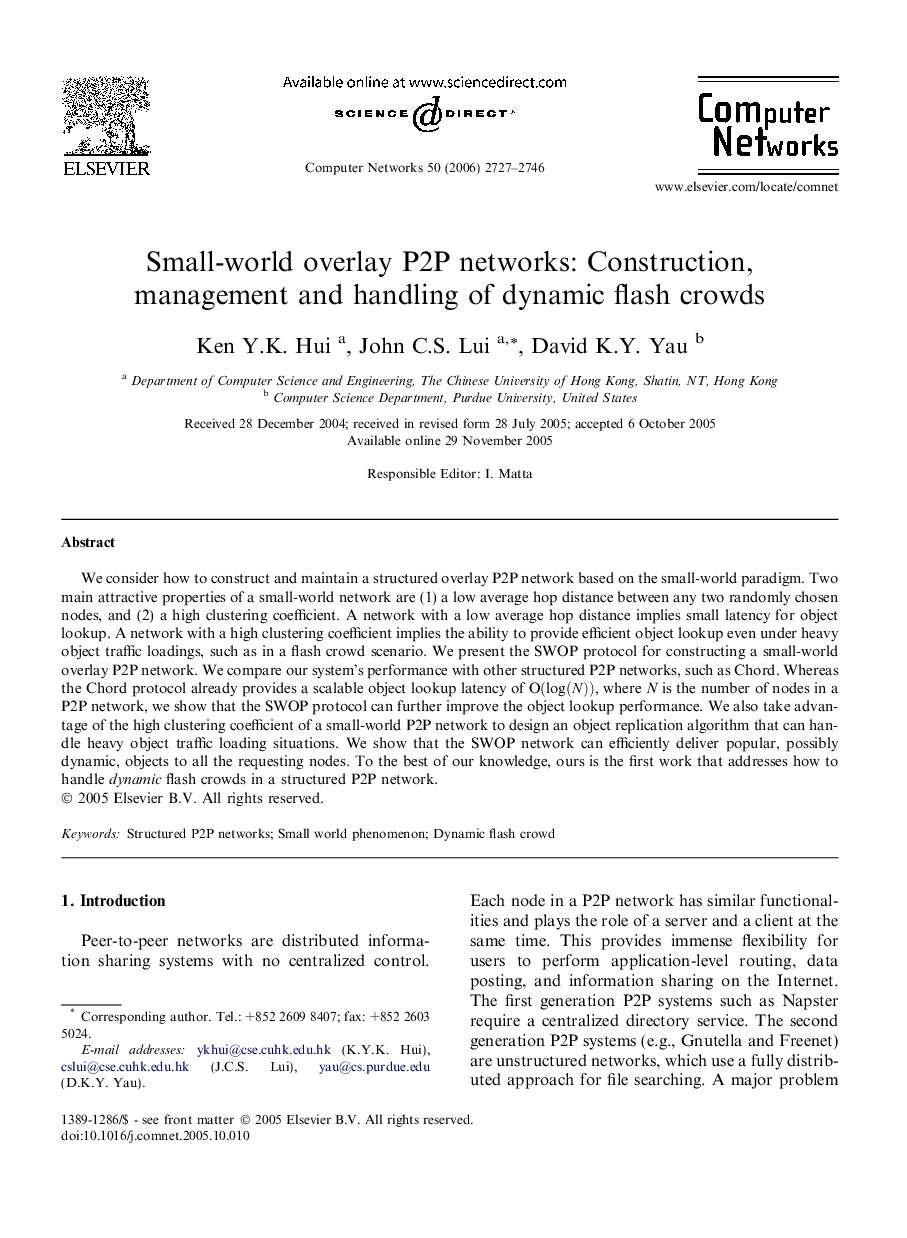| Article ID | Journal | Published Year | Pages | File Type |
|---|---|---|---|---|
| 451583 | Computer Networks | 2006 | 20 Pages |
We consider how to construct and maintain a structured overlay P2P network based on the small-world paradigm. Two main attractive properties of a small-world network are (1) a low average hop distance between any two randomly chosen nodes, and (2) a high clustering coefficient. A network with a low average hop distance implies small latency for object lookup. A network with a high clustering coefficient implies the ability to provide efficient object lookup even under heavy object traffic loadings, such as in a flash crowd scenario. We present the SWOP protocol for constructing a small-world overlay P2P network. We compare our system’s performance with other structured P2P networks, such as Chord. Whereas the Chord protocol already provides a scalable object lookup latency of O(log(N))O(log(N)), where N is the number of nodes in a P2P network, we show that the SWOP protocol can further improve the object lookup performance. We also take advantage of the high clustering coefficient of a small-world P2P network to design an object replication algorithm that can handle heavy object traffic loading situations. We show that the SWOP network can efficiently deliver popular, possibly dynamic, objects to all the requesting nodes. To the best of our knowledge, ours is the first work that addresses how to handle dynamic flash crowds in a structured P2P network.
